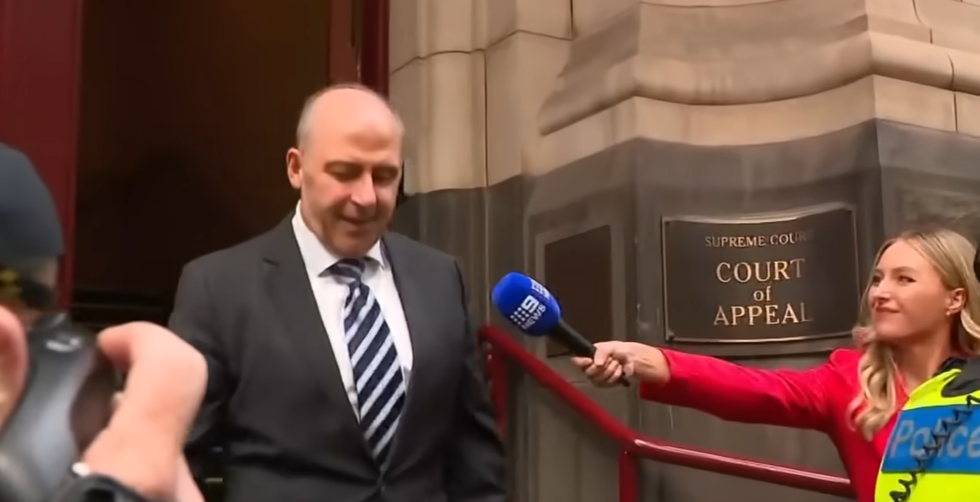Tony Mokbel, who had just been released from prison after serving eighteen years, entered Melbourne’s Northland Shopping Centre with the quiet assurance of someone reclaiming space. It was a scene that captivated both attention and imagination. It was the presence of a woman by his side, not just his freedom, that sparked the media frenzy amidst the perfume shelves and Saturday shoppers. Dark-haired, calm, and walking close to him, she soon attracted attention and was referred to in the media as Tony Mokbel’s “new girlfriend.”
The questions were relentless and came fast. Who is she? Is she taking the place of Danielle McGuire, Mokbel’s child’s mother and former underworld identity? Or is this someone who, despite years of imprisonment and legal turmoil, had stayed hidden and faithful in private?
Tony Mokbel – Bio and Personal Information
| Field | Details |
|---|---|
| Full Name | Tony Mokbel |
| Birth Year | 1965 |
| Age | 59 (as of 2025) |
| Known For | Convicted drug trafficker, Melbourne underworld figure |
| Former Partner | Danielle McGuire |
| Current Partner | Rumored long-term de facto partner (identity not confirmed) |
| Recent Activity | Released from prison after 18 years; spotted shopping at Myer |
| Living Situation | Residing with sister Gawy Saad and her family in northern Melbourne |
| Legal Status | Out on bail; daily police check-ins, GPS monitor, curfew 11pm–6am |
| First Public Sight | Shopping at Northland Shopping Centre with rumored girlfriend |
| Notable Visit | Paid respects at his mother’s grave immediately after release |
| Reference | Daily Mail Australia – https://www.dailymail.co.uk/news/article-14574023/Tony-Mokbel-crime-perfume-myer-free.html |
The public’s perception of Mokbel has changed recently. Not only because of his legal release—which was made possible by the disclosure that former attorney Nicola Gobbo had been a police informant—but also because of what or who accompanied him when he was released from prison. Hours after his release, he was seen strolling alongside this unnamed woman, his sister Gawy, and her husband Youssef at Viewbank Park. The symbolism—quiet companionship, family ties, and the aroma of reinvention clinging to the air like a cologne spritz—was not overlooked.
The name Danielle McGuire conjures up a different chapter—one that is entwined with fame—for a lot of Australians. Danielle’s connections to Melbourne’s criminal underbelly were once just as notorious as Mokbel’s, and she was well-known for her associations with both Mokbel and the late Mark Moran. However, there has been little information surrounding her return from Greece, allegedly with their child. Her exclusion from the initial images of Mokbel’s liberation heightens the mystery of the developing story.

It seems as though the woman at Mokbel’s side now symbolizes a calculated rebranding—a softer image. Whether intentional or just natural, this illustrates a recurring trend: prominent people finding new romantic partners as a turning point in their personal lives. Like a politician coming out of a scandal or a famous person coming back from a breakup, Mokbel’s comeback appears to be intended to imply change.
He looked surprisingly normal as he browsed nutritional supplements, picked out fragrances, and walked through a department store. However, having a devoted friend by his side added a human element to that normalcy that had been mostly lost due to years of mugshots and crime stories.
Mokbel was more of a symbol than a person at the height of his fame, as evidenced by headlines, courtroom drawings, and dramatizations such as Underbelly. In 2025, however, he is free to walk around, untethered enough to hold hands in public while being tracked by GPS. That seemingly insignificant gesture had deep significance. It implied solace, closeness, and possibly atonement.
From that perspective, the story seems especially representative of the way the media romanticizes or even humanizes ex-offenders. Stories about the Reformation are popular, particularly those that strike a balance between sentimentality and severity. Mokbel’s entrance into daily life, surrounded by flashbulbs and perfume counters, speaks directly to that cultural undercurrent.
However, locals’ responses have been conflicted. His presence caused some neighbors to express discomfort, describing it as disturbing and disruptive. And for good reason—his past continues to cause anxiety in the community. But beneath those anxieties is a more general query: Is it possible for someone with such a strong criminal history to ever fully reintegrate?
Mokbel appears to be responding to that question by taking action by visiting his mother’s grave in private, checking in with police in casual attire, and strolling through Viewbank Park with a rumored partner. Whether deliberate or not, his strategy seems purposefully understated—possibly very successful in reestablishing the context for his image.
Media outlets have been rushing to write about the unidentified woman for the past week. Although she has not yet been given a name, she has come to represent Mokbel’s second act. Furthermore, this new chapter appears to be developing on a different emotional register, even though Danielle McGuire’s story and his may still intersect—particularly in light of their child.
In an especially creative turn of events, Mokbel’s release took place at the same time that cases affected by Nicola Gobbo’s actions were still being reexamined. Despite the public’s reluctance, this legal context has provided him with a valid justification for freedom. As a result, his romance balances being performative and personal.
Characters that represent contradictions are consistently fascinating to society. The picture of a man perusing Myer and strolling hand in hand with someone who might have seen past his crimes now clashes with Mokbel’s well-earned reputation for brutality. This paradox, remarkably reminiscent of tales of ex-mobsters who became memoirists, reverberates not only in news reports but also in discussions at coffee shops and dinner tables.


